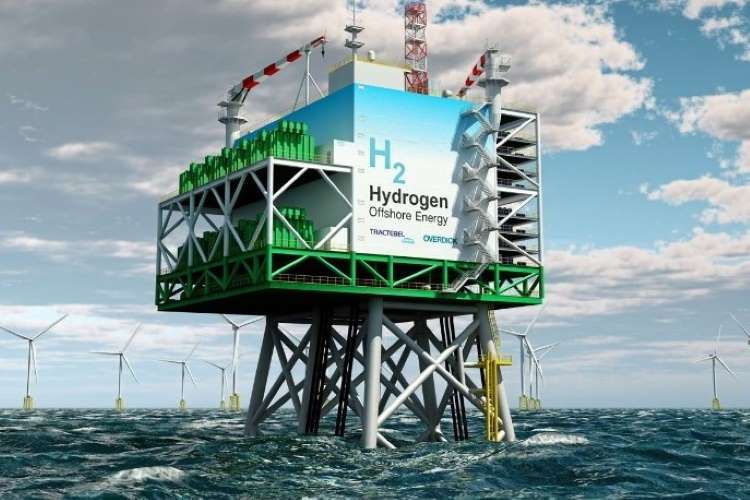Indian Oil Corporation has decided to cancel its tender for establishing India’s first green hydrogen production unit, planning to relaunch it with broader ambitions. Under its revised strategy, the state-run entity looks to install units at all its refineries, contributing to a 22.4 trillion green transition plan. This initiative targets net-zero carbon emissions by 2046. The original tender was withdrawn after an industry association brought IOCL to the Delhi High Court over a conflict of interest, and it had also garnered limited interest from bidders.
IOCL, the nation’s largest oil marketing company, had previously issued a tender to establish a 10 kilo tonnes per annum (KTPA) capacity clean hydrogen manufacturing unit at its Panipat refinery and petrochemicals complex. The project, intended for a build, own, operate, transfer (BOOT) basis, set the contract period at 25 years, requiring the successful bidder to deliver clean hydrogen within 30 months of receiving the award letter.
READ | India to play lead role in Asia’s economic integration
India actively pursues its green hydrogen ambitions, seeking to establish itself as a global leader in production and export. The Green Hydrogen Mission, spearheaded by the Ministry of New and Renewable Energy with a substantial budget allocation of Rs 19,744 crore, plans to achieve this goal. Its goal is to position India as a global hub for renewable hydrogen production, utilisation, and export. It seeks to propel India’s clean energy trajectory and contribute to its net-zero aspirations.
Green hydrogen for clean energy
In the global quest to achieve net-zero emissions by 2050, sustainable hydrogen emerges as a game-changer. This clean fuel, produced by splitting water using renewable energy, boasts immense potential for decarbonising sectors with limited electrification options. Eco-friendly hydrogen holds significant promise for heavy industries like steel, refineries, and long-distance transportation, where traditional methods leave a substantial carbon footprint. The versatility of hydrogen allows its utilisation in various applications, including generating electricity, powering fuel cells for vehicles, and producing clean synthetic fuels. By harnessing green hydrogen’s potential, nations worldwide can significantly contribute to combating climate change and fostering a sustainable future.
Significant investments are being made, with both private players and public sector undertakings participating in the race to establish a robust eco-friendly hydrogen ecosystem. Recent developments like GAIL’s introduction of hydrogen blending in its network and BPCL’s ongoing tender for a production plant highlight the burgeoning activity in this sector.
The race to establish India as a Green Hydrogen hub includes both private companies and PSUs, with significant players like Reliance, Adani Group, JSW Energy, Larsen & Toubro, and NTPC. The emergence of new competitors is set to make the sector increasingly dynamic and competitive.
India’s initial steps towards integrating carbon-neutral hydrogen into its energy mix are noteworthy. GAIL Ltd introduced hydrogen blending in India’s City Gas Distribution (CGD) network, and NTPC Limited began blending green hydrogen into the PNG network at Kawas Township. Additionally, BPCL’s ongoing tender for a green hydrogen production plant in Kochi may set the benchmark for green hydrogen pricing in India.
Recent developments have seen Reliance Green Hydrogen and Green Chemicals, ACME Cleantech Solutions, and Greenko Zero winning government incentives for green hydrogen production under the Strategic Interventions for Green Hydrogen Transition Scheme (Mode-1-Tranche-I).
Adani Group is planning to raise up to $3 billion to support its ambitions in the green hydrogen sector. Adani New Industries aims to start clean fuel production in Gujarat by 2027, with a potential $50 billion investment over the next decade.
The sector’s growth is also evidenced by Karnataka Renewable Energy Development Limited’s (KREDL) decision to establish a 300 kW self-sustained renewable hydrogen plant, reflecting the sector’s investment appeal.
India’s goal is to achieve at least 5 million metric tonnes of green hydrogen production every year by 2030, alongside a 125 GW increase in renewable energy capacity. Currently, the main consumers of green hydrogen include petrochemical refineries, fertilizer manufacturers, and steel manufacturers, with the transportation sector also showing growing interest.
Affordability remains a concern in the Indian market, with leading producers eyeing exports, especially to Europe, due to higher affordability there. To compete globally, especially with countries receiving government subsidies for clean hydrogen, India may need significant government support, with investments between $4 to $12 billion required by 2030, according to a report on renewable hydrogen potential for India.
While India’s commitment to renewable hydrogen is commendable, several challenges remain to be addressed. Affordability presents a significant hurdle, with current production costs exceeding established alternatives.
Additionally, building the required infrastructure for production, storage, and transportation requires substantial investment. However, these challenges are not insurmountable. With continued government support, strategic partnerships, and technological advancements, India can overcome these hurdles. By leveraging its renewable energy potential and fostering a dynamic carbon-neutral hydrogen ecosystem, India can not only achieve its ambitious production targets but also emerge as a global leader in clean energy.

